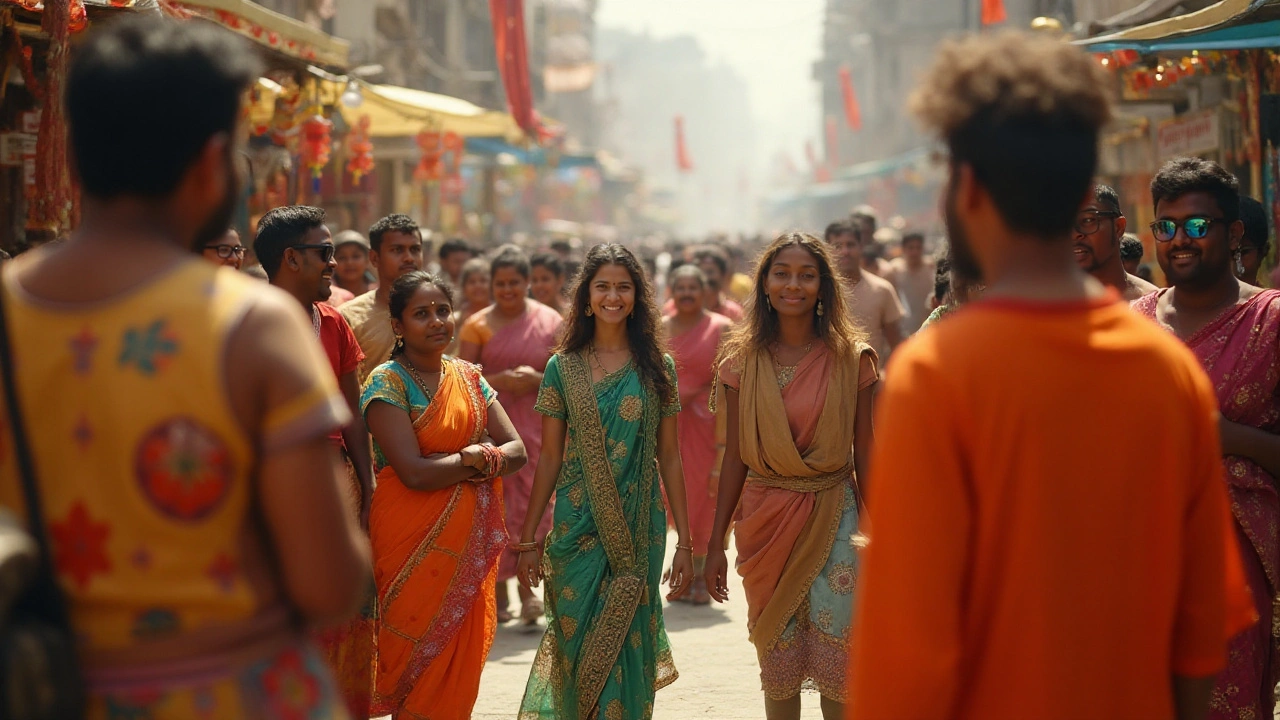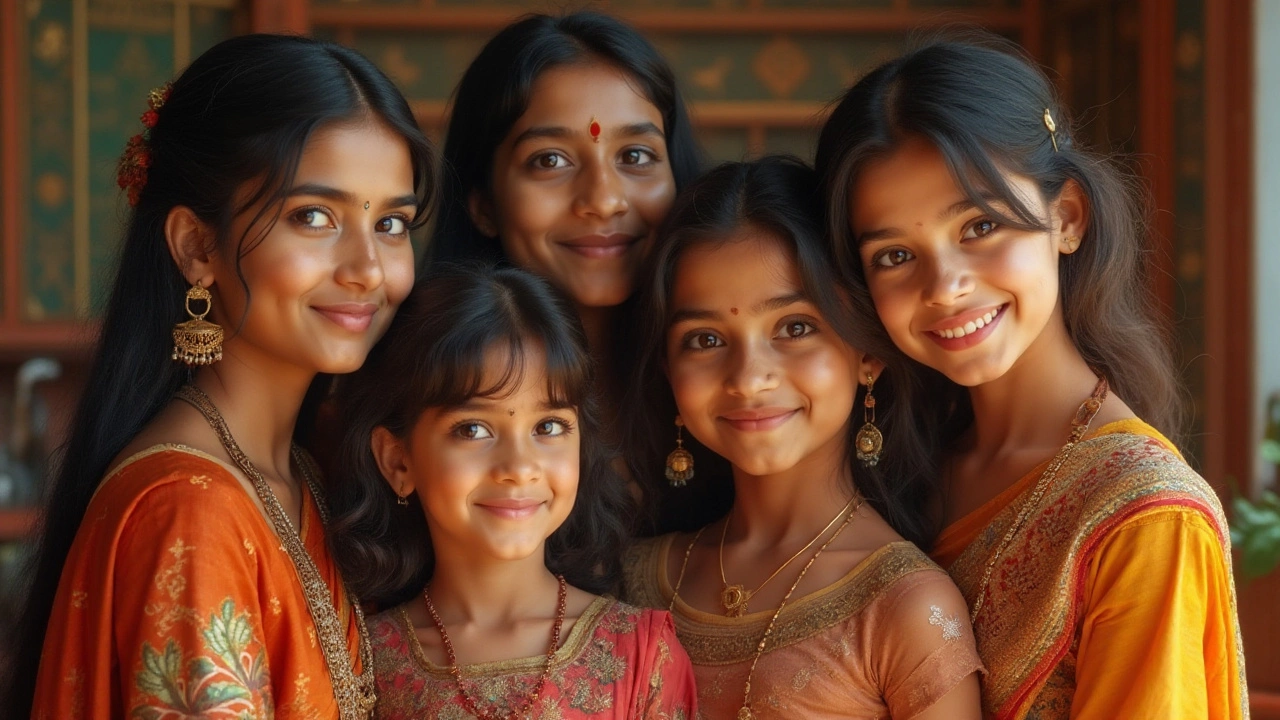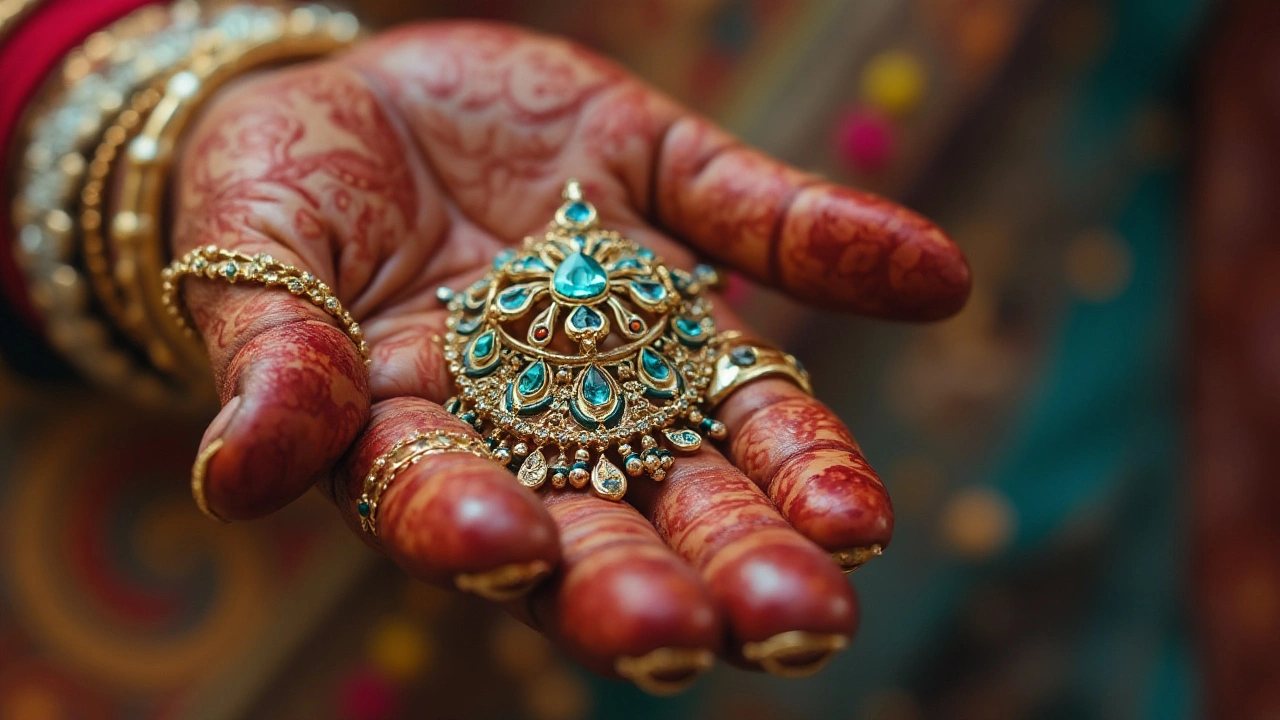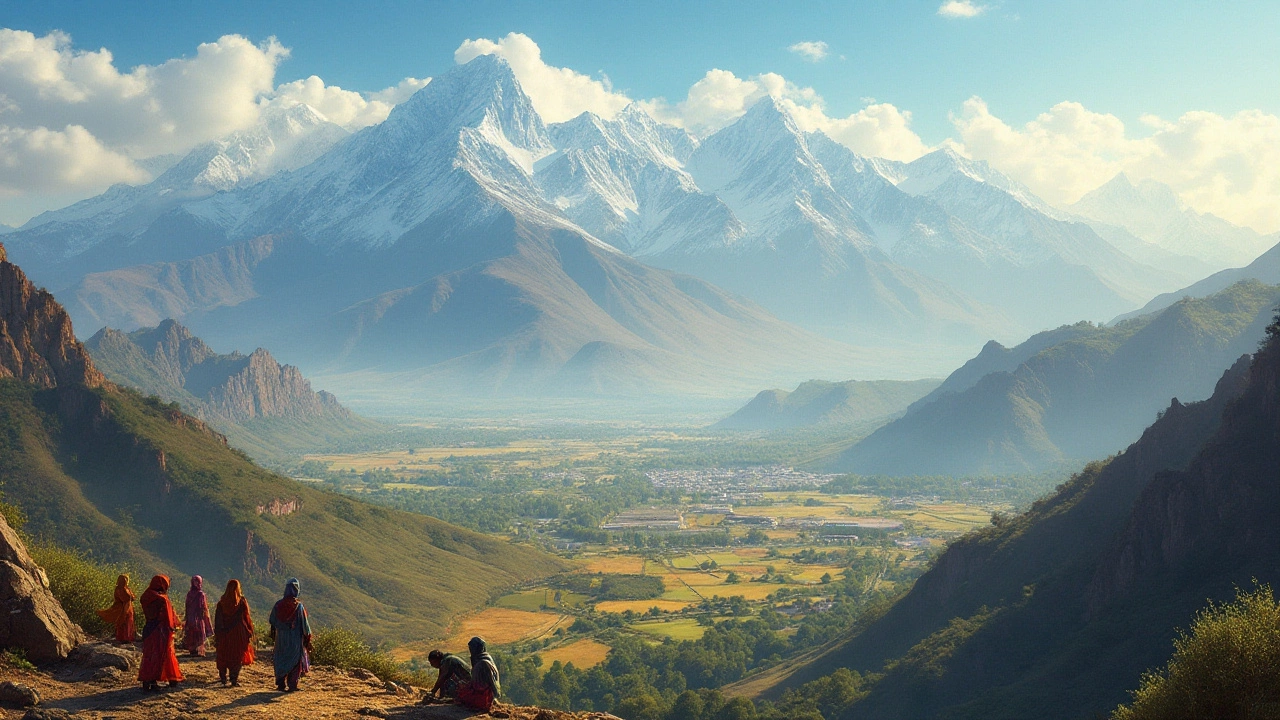
In the vibrant tapestry of global cultures and communities, India stands out with its rich mosaic of ethnicities and traditions. When discussing the race classification of individuals from India, it's essential to acknowledge the many layers that contribute to this intriguing subject.
Often categorized under the broad spectrum of Asian race, Indians comprise a multitude of ethnic groups that defy a singular definition. These complexities stem from India's unique geographical setting, its ancient history marked by waves of migration, and a legacy of intermingling civilizations.
As we delve into the classification of Indian race, one must appreciate the country's expansive cultural landscape, explore the historical nuances, and understand the varied perspectives that contribute to a deeper insight into Indian identity on the world stage.
- Defining Race and Ethnicity
- Historical Context and Influences
- Variety Within Indian Subgroups
- The Global Perspective on Indian Identity
Defining Race and Ethnicity
The concept of race and ethnic identity often intertwine, yet they hold distinct meanings that are crucial to understand when discussing the classification of people from India. Race is typically viewed as a categorization based on physical characteristics such as skin color, facial features, and hair texture. These attributes, while visible, only touch the surface of one's genetic ancestry and geographical roots. On the other hand, ethnicity delves deeper into the social and cultural aspects that define a group of people. It encompasses shared attributes like language, traditions, religion, and history, creating a sense of communal identity and belonging.
Determining the race and ethnicity of individuals from India involves unraveling this country's complex history and cultural amalgamation. India, with its expansive geography, has seen millennia of migrations and invasions, each bringing new influences and merging with existing cultures. This has given rise to a diverse demographic fabric where people from various regions display distinct physical and cultural traits. Therefore, terms such as South Asian or Indian often paint a broad-brush picture that may not fully capture this rich diversity.
In a conversation about Indian ethnography, it's beneficial to remember that such discussions are framed by historical and social contexts. For instance, the colonial imposition of racial categories by the British in India aimed to classify people into discrete races, often based on inaccurate stereotypes. These early categorization efforts, though outdated, still echo in some contemporary dialogues. Noted cultural anthropologist Clifford Geertz once noted,
"Ethnic identity is founded not necessarily on sheer fact but on shared perception."This insight beautifully encapsulates the intricacy and variance found in India's ethnic identification.
Understanding these definitions aids in appreciating the tapestry of identities that manifest in India. While race classification might serve certain institutional purposes globally, engaging with the ethnic identity spectrum offers a more authentic and nuanced understanding of what it means to be Indian. This appreciation can significantly enhance dialogue across cultures, emphasizing the importance of individual narratives and local experiences in constructing identity.

Historical Context and Influences
The story of India’s ethnic tapestry is as ancient as it is intricate, rooted deep in layers of history that span millennia. Situated at the crossroads of Asia, India has been a melting pot of different cultures, languages, and ethnicities. This intertwining began as early as the Indus Valley Civilization, which dates back to 2500 BCE, laying robust foundations for a multitude of cultural exchanges. Indian culture is importantly reflected through its socio-spatial history, affected out not by any single event, but by continued migration and trade movements through the ages. Long-standing trade routes such as the Silk Road drew merchants, travelers, and scholars who spread ideas, traditions, and genetic heritages that enriched India's ethnic landscape. These ancient interactions set the stage for a country where a single ethnic classification is implausibly narrow.
As centuries progressed, India continued to see waves of invaders and settlers, each leaving a distinct mark. From Aryans who entered around 1500 BCE to later Greeks, Persians, and Central Asians, diverse groups have woven their threads into the vibrant Indian fabric. One of the more profound influences arrived with the advent of the Mughals, a Central Asian dynasty that blended their culture with the existing Indian ethos, creating a unique fusion that persists to this day. Interestingly, their architectural and culinary influences are globally celebrated. Then came the colonial era, a period that both challenged and communicated the diverse Indian race identity. Britain's colonial rule linked India to the world, altering perceptions and exchanges, impacting the socio-economic threads of India's complex identity. An oft-echoed thought comes from Jawaharlal Nehru, India's first Prime Minister, who famously said,
"India is a geographical and cultural unit, where it is accepted that a nation's culture resides in the hearts and souls of its people."
Moreover, India's historical connections are not merely external; internal migrations played a vital role in shaping the ethnic diversity seen today. As different communities moved and mingled over centuries, linguistic cultural diversity flourished, bringing about unique ethnic subgroups. The Dravidians in the south, the Indo-Aryans in the north, and myriad tribal groups contribute to this varied ethnic landscape. Linguistic geography further intertwined with ethnolinguistic roots, proving a map of diversity that extended far beyond the simplistic binary ethnic classifications. The introduction of states and linguistic demarcations in the 20th century can be seen as a key milestone in recognizing regional identities. These internal flows of people are paramount to understanding India's myriad idiosyncrasies under a single national identity.
The impact of the historical migratory and cultural exchanges can be evidenced in modern DNA studies. Recent genome sequencing efforts reveal India's population is composed of four major ancestries that correlate and support historical accounts of mixing from central Asian, Austroasiatic, Tibeto-Burman, and indigenous Dravidian influences. A 2017 study published in the journal 'Genomic Research' emphasized these vivid genetic mosaics, reflecting historical events and mass movements that continue to shape India's ethnic equation distinctly. These migrations and historical interactions make it clear that Indian identity cannot be confined to a singular ethnic label but should rather embrace its variety. Thus, the concept of race classification within an Indian context remains elegantly multifaceted and uniquely vibrant, representative of a long, rich heritage of mutual exchange and evolution.

Variety Within Indian Subgroups
India's cultural landscape is as diverse as its terrain, and this variety is deeply rooted in the multitude of ethnic subgroups within its boundaries. With over 2,000 distinct ethnic groups, India's social fabric is a kaleidoscope of languages, traditions, and histories. This diversity is not just a matter of cultural pride but an essential part of understanding what race means in the Indian context. Each ethnic community in India carries a unique history, often tied to specific regions that have shaped their lifestyles and traditions over generations. The Dravidian people, predominantly found in the south, have their own ancient languages like Tamil and Telugu, which are separate from the Indo-Aryan languages spoken in the north. This linguistic diversity is a key identifier of ethnic subgroups and significantly contributes to the wider discourse on ethnic identity.
The northeastern part of India paints a different cultural picture, with its own tapestry of ethnic groups influenced by Southeast Asian traditions. Tribes like the Nagas and Mizos each have societal structures and customs distinct from the central and southern parts of the country. These communities often live in secluded terrains, preserving their traditions amidst rapidly changing global influences. The indigenous communities, or Adivasis, spread across various regions, embody another layer of India's ethnic spectrum. They maintain a symbiotic relationship with nature, often relying on traditional forms of farming and hunting, reflecting an invaluable aspect of India's ethnic identity. The complexity of these groups goes beyond mere ethnic labels, as they highlight how India’s rich history of migration, trade, and cultural exchange has created one of the most varied diaspora globally.
Ethnic Dynamics and Social Composition
A fascinating element that adds to India's ethnic variety is the influence of external cultures through both peaceful exchanges and invasive conquests. For example, the influence of Persian culture is quite prominent in various parts of India, especially in art, architecture, and cuisine. This influence is most strongly felt in the northwest, where many communities still practice traditions that blend Persian and local elements. As we move west, the influence of European colonialism becomes apparent, especially in coastal states like Goa, where Portuguese culture has significantly impacted local customs and practices. In a quote from renowned historian Romila Thapar, she notes, "India's diversity is its strength, but it also presents challenges in forming a cohesive national identity."
Despite such diversity, the concept of unity in diversity plays a significant role in the social fabric of India. While these subgroups may differ in terms of cultural practices, languages, and beliefs, they all find a certain unity in shared cultural values, family structures, and, more recently, through national identity. The variety within Indian subgroups is not just a testament to its historical and cultural depth but also a driving force for its evolving national identity. Understanding these layers of ethnic diversity helps answer broader questions about race classification in India. It highlights how the country's unique blend of ethnic identities contributes to the global understanding of race and ethnicity, emphasizing the importance of considering cultural contexts when classifying and understanding people and their histories.

The Global Perspective on Indian Identity
Understanding the global perspective on Indian identity involves delving into historical narratives and the contemporary cultural sphere. Due to its extensive history and myriad influences, India's ethnicity often sparks interest around the world, leading to varied interpretations and sometimes even misconceptions. As globalization tightens interconnections, these identities are often viewed through the lens of curiosity, sometimes necessitating clarification. India, primarily associated with the Asian race, in fact houses an incredible diversity that stretches beyond simplistic racial categories.
Globally, Indians are often acknowledged for their significant contributions across various fields such as technology, literature, and art. This global recognition has sometimes led to a homogenized perception of Indians, placing them in broad stereotypes that marginalize lesser-known ethnic distinctions. Prominent figures, such as Rabindranath Tagore, Nobel laureate, emphasized the richness of India's cultural diversity in literature and philosophy. As he once articulately stated,
“The highest education is that which does not merely give us information but makes our life in harmony with all existence.”This profound recognition hints at why understanding Indian identity requires more than a glance. It requires an interactive engagement with its vast cultural expressions.
The Influence of Migration
Migration trends have significantly shaped the perception of Indians across the globe. Indians began spreading across continents centuries ago, leading to a broad diaspora community in countries like the United States, the United Kingdom, and many other nations. Recent statistics suggest that the Indian diaspora is one of the largest immigrant groups worldwide, further highlighting its impact on global viewpoints. Such historical movements have, over time, blurred the lines of ethnic identity, creating a fusion of cultures while maintaining a distinct Indian essence. This results in multifaceted perspectives on what it means to embody an Indian identity on foreign soil.Cultural Representations and Misrepresentations
Cultural representations of Indians in media and entertainment often paint them with a broad brush. While there have been instances where Indian culture is celebrated, there are frequent misrepresentations that distill diverse cultures into a single narrative. This is particularly evident in films and popular media, where certain Indian characteristics and lifestyles are either exaggerated for dramatic effect or reduced to stereotypes. This portrayal can have repercussions, shaping global perceptions and affecting how individuals of Indian race are recognized and understood.Adopting a genuinely inclusive perspective requires acknowledging India's diversity, from languages to customs, and recognizing how this shapes the identity of Indians worldwide. While race remains a consolidated form of classification, diving deeper into the subtleties of Indian ethnic identity unveils a vibrant spectrum that defies simple categorization. Such is the charm of India: an ever-evolving orchard of varied and distinct identities that, when viewed collectively, offer incredible insights into human civilization itself.